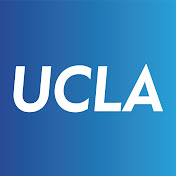Bachelor of Science in Statistics and Data Science (Bachelors)
UCLA
Los Angeles, CA
The Statistics and Data Science major is designed to provide a general introduction to the practice of statistics for students who intend to pursue study at the graduate level or seek employment in industry or government. Courses are selected to provide sufficient theoretical background for future graduate-level research work, exposure to modern techniques and practices, and experience in fields of application.
It is strongly recommended that students, in conjunction with the BS degree, pursue a minor in a substantive discipline that applies statistics. Students must consult with the undergraduate faculty adviser to ensure that the minor selected is one in which statistics is applied.
Students interested in the major in Statistics and Data Science should meet with the student affairs officer early in their careers. Students who have completed Mathematics 33A, Statistics 20, and at least one course from Statistics 10 through 15 may declare a pre-major.
Capstone Major
The Statistics and Data Science major is a designated capstone major. Students are prepared for future academic studies, as well as for careers in which understanding, analyzing, communicating, and organizing data are of central importance. The capstone allows students to put into practice concepts and ideas that otherwise might remain theoretical and/or abstract, and to synthesize the many topics they have studied. Students should demonstrate the ability to restate investigative questions in terms of statistical models or algorithms, find appropriate research literature to support their work, relate theoretical concepts to real-world problems, and clearly communicate their results to non-technical audiences.
Mga Resulta ng Pagkatuto
1. Ability to restate an investigative question in terms of a statistical model or algorithm
2. Verbally communicate statistical results clearly to a non-technical audience
3. Successfully relate theoretical concepts to a real-world problem in a written report
4. Demonstrated ability to find research literature appropriate to the investigative task
5. Deliver reproducible statistical analyses using accepted practices of the research community
6. Demonstrated ability to verbally and orally communicate statistical results to both technical and non-technical audiences








